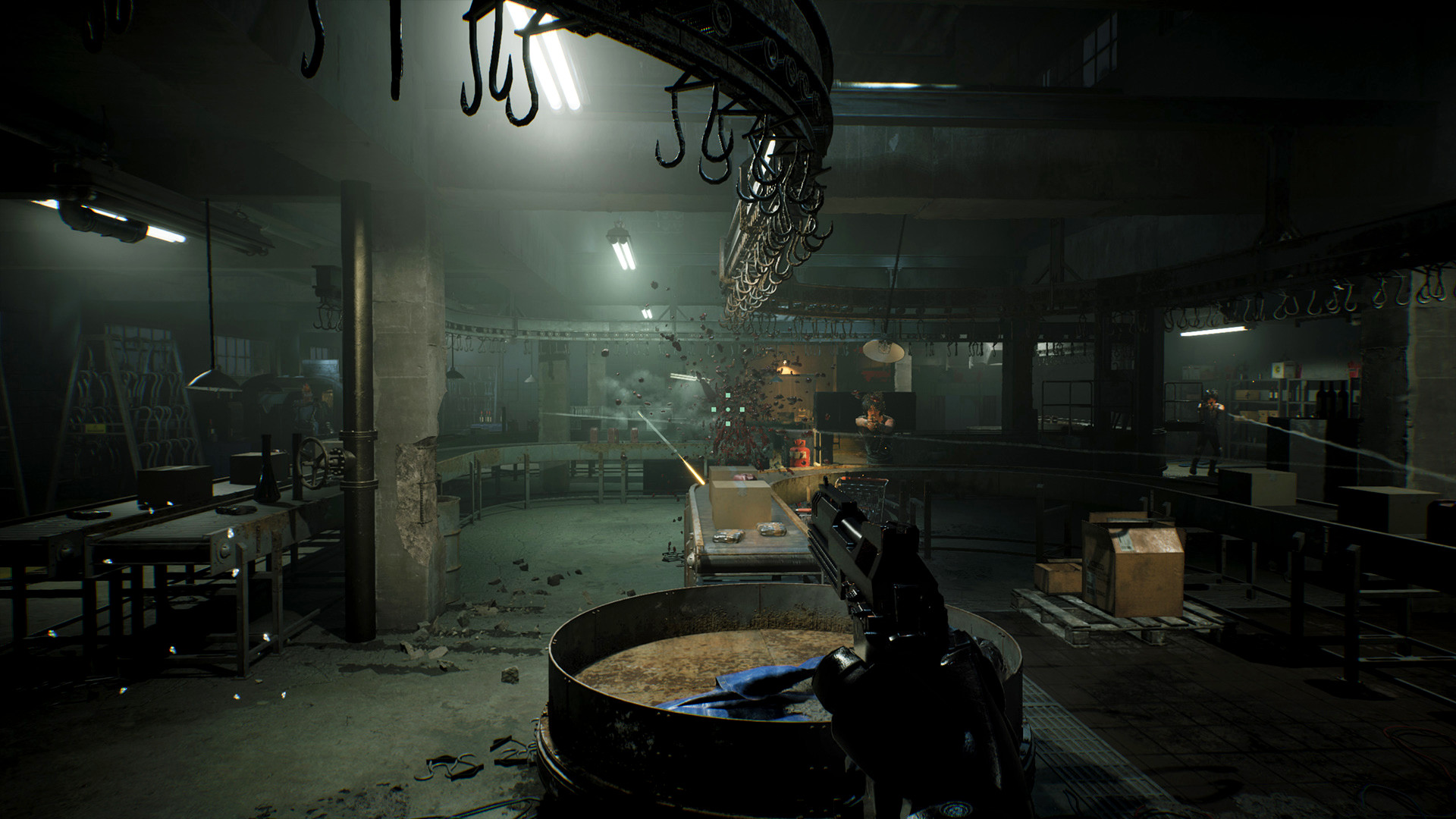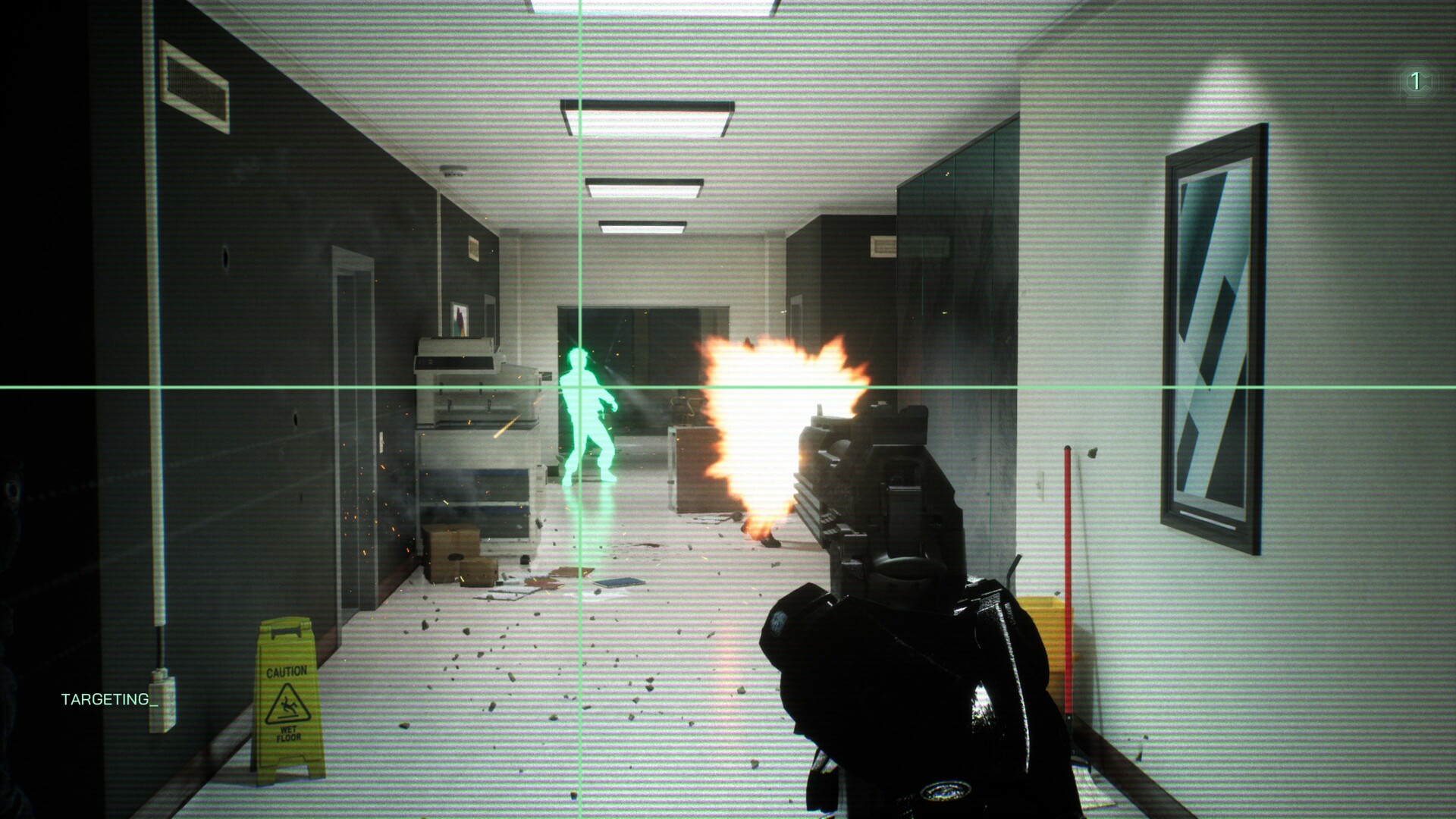
Middle-aged millennials rejoice, for RoboCop finally has a video game befitting that is a ton of fun to play. A love letter to the original 1980s cyborg law enforcer, RoboCop: Rogue City is faithful to its source material, effortlessly melding visceral brutality with schlocky one liners. Developer Teyon – seasoned in action tie-in games following 2014’s Rambo effort and the more successful Terminator: Resistance in 2019 – clearly understand the brief. They get what it means to be RoboCop. Rogue City nails the dark humour and cyberpunk corporate commentary of the franchise; it delivers a superb power fantasy, encapsulating the feel of stomping through a lawless city’s criminal underbelly with nay but a scratch to the tin-man’s armoury, obliterating any brain-fried goon unfortunate enough to find themselves in RoboCop’s crosshairs. And beneath all this mindless gun fun, there’s a thread of humanity; a beating heart inside the metal suit.
This isn’t just a game for those of us who grew up appreciating the sci-fi action thriller though, oh no. RoboCop: Rogue City is as barebones a shooter you’ll find this year, and its simplicity is its triumph. Throughout the campaign, old RC barely musters a canter; there aren’t complex aiming systems to grapple with; the RPG system is light and undistracting; there’s never even a need to find cover. No, RoboCop is a walking, talking, bullet spraying tank, bulldozing his way through any obstacle, powerful weaponry in hand.
The net result is endlessly enjoyable ultra-satisfaction. The shooting never ceases to be fun. Splattering the brains of goons across warehouse walls and watching the meat trickle down to the ground doesn’t grow old. Grabbing motorcycle riding assailants by the neck and flinging them over buildings is never a tireless exercise. Lobbing vintage CRT monitors at enemies and watching their bodies frazzle in an array of fire and electricity is consistently rousing. It’s as if Teyon have somehow tapped into the gooey pleasure dome inside our brains, and they’re pouring energy drink straight into it. It’s buzzing, exciting, enthralling. A sugar rush lasting the entire ten-to-fifteen-hour runtime.
And whilst the shooting is skewed towards the basic end of the FPS spectrum, there’s tons of detail in there to keep you engaged. The gore is ramped up to the max, with crimson pools of blood, heads blowing off, protruding bones, and all manner of grisly viscera exploding out of RoboCop’s bullets. Gore can be dimed up further thanks to upgrades that can be applied to weaponry by converting collected XP to firepower via a fun mini game. The fantastic ragdoll physics hurl enemies in countless ways, most with hilarity. Some death animations are so… uh, ragdolly, that it looks unrealistic, but this speaks to RoboCop’s relentless, over-the-top power. And if you think RoboCop is overpowered in this game, that its enemies blow into bits a little too easily… well, that’s kind of the point, isn’t it? RoboCop is meant to be impenetrable, and whilst the game does away with it by implementing a damage system to RoboCop with him needing to heal from time to time, it still takes a lot for enemies to blast our metal hero down. Symbolic of his power is a lack of weapon recoil. Just like there being no need to find cover, it wouldn’t make sense if guns were flailing after every pull of the trigger. RoboCop’s machine grip is simply too strong.
Attention to detail goes further still: despite his power, RoboCop won’t simply barge through every locked door. No, he’s programmed not to break the law, so he’ll seek a warrant first before doing anything unlawful. Peter Weller – yes, that Peter Weller – is back to lend his voice to Detroit’s finest cyborg. There’s a host of secrets littered throughout, such as the toxic waste van driven by Emil lying dormant and corroded in the industrial wastelands. There are text instructions on the handle of the Mossberg 500 Bullpup shotgun, a quirky detail the developer probably felt too amusing to exclude.
One of the finest details is Alex Murphy’s signature gunslinging firearm spin. It’s a shame there isn’t a dedicated button to unleash this special move at a player’s whim, but it’s a crucial detail which illustrates RoboCop’s humanity still existing somewhere within his metal shell. And for those familiar with the character, RoboCop’s duality between man and machine, the question of whether he still possesses a soul, is an overarching theme of his backstory. The game does a serviceable job of highlighting this with its binary morality system. See, between all the fun gunning RoboCop undertakes all manner of more sedate policework, including issuing parking tickets and helping local business owners rid their premises of troublemakers. Presumably this kind of work is well below his paygrade, but his dedication to the force means players get a broader picture of the world he’s trying to cleanse of bad guys.
During interactions with Detroit’s citizens RoboCop has the choice to go by the book or issue warnings that’ll go some way to garnering trust with the suspicious populace. Letting things slide is a clever tactic employed by the developer to inject an element of humanity into RoboCop. In effect, the player gets to decide how much of our hero is the mechanised law enforcer, and how much is still the human Alex Murphy. Missions and the game’s overriding story can end specifically based on how RoboCop interacts with the world too.
Not mentioned yet – and something that is crucial to the RoboCop experience – is its guns. And specifically, the Auto 9 hand cannon. Sure, the game’s raft of Uzi’s, grenade launchers, and assault rifles are all well and good, but it’s the iconic Auto 9 that players will spend most of their time with. Zero recoil, upgradeable parts including a limitless magazine, alternating rates of fire – including single shot, three-round bursts, and fully automatic – makes this gun uber-satisfying to fire. Headshots are almost a given due to its precision.
The Auto 9 is so good that it renders most of the game’s other guns largely pointless. And if there’s one criticism to levy on RoboCop: Rogue City, that’s probably it. However, it’s awesome firepower smashes Detroit’s concrete blocks, glass signage, and office desks into a visually arresting explosion of dust and particles. Thanks to Unreal Engine 5, and specifically its Chaos Destruction system, Rogue City exhibits a satisfying blast of destruction, obliterating environments to smithereens with barely a drop in framerate. Elsewhere, the environments themselves look fantastic, with beautiful florescent light bathing the grimy, grey industrial brickwork exceptionally well.
Teyon have done a remarkable job of squeezing out every morsel of character from the 1980s sci-fi media. Nostalgia runs deep, and it’s an outstanding achievement for such a refined development team to craft something on the cusp of AAA greatness. It’d be fantastic to see this developer tackle more 1980’s action franchises – Aliens, and maybe even another Predator game – there’s no worry Teyon won’t give it the love it deserves. For now, RoboCop: Rogue City is an unexpected hit, fun and faithful to its source material that movie tie-in games rarely are.
Note: The views expressed in this article are those of the author and do not necessarily represent the views of, and should not be attributed to, GamingBolt as an organization.
















